Are you searching for the most interesting facts about Rome? The city of Rome both anicent and modern is overflowing with incredible monuments, fascinating history and more than a few surprises.
From the first Roman emperors to the grandeur of the Colosseum, the River Tiber, feral cats and Aventine Hill, these fascinating Rome facts might surprise you.
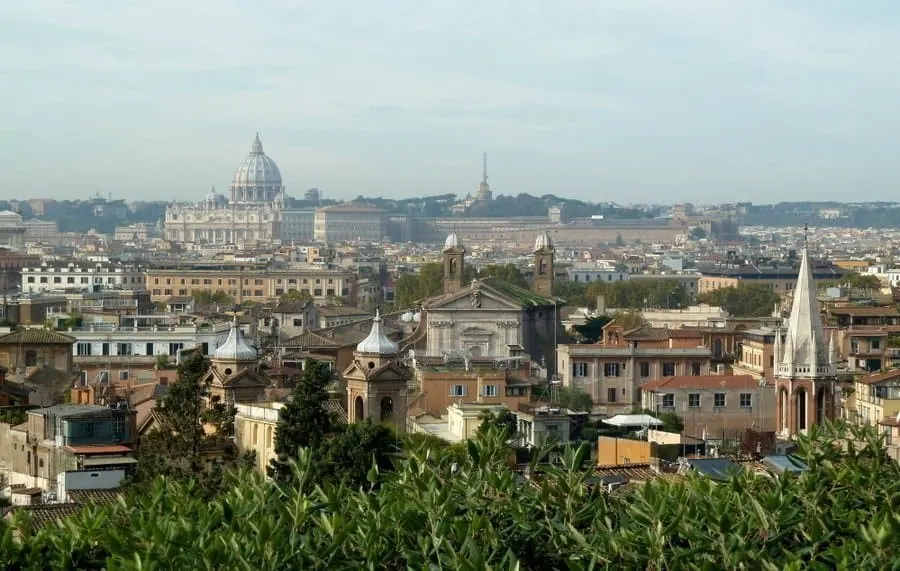
Founded more than 2,700 years ago, the city of Rome, capital of Italy, is one of the most popular and most visited cities around the world. It’s the place where many religions were born, political ideas were formed, and incredible buildings were constructed. It’s also one of my favourtie cities – I’d visit every year if I could and never get bored.
I’m not alone because around nine million tourists visit Rome every year to admire the beauty of this city whose culture, customs and cuisine never fail to impress.
A visit to Rome with kids is great for introducing them to history and it’s also one of the most romantic places in Europe. Take a look at these facts about Rome and you’ll discover some interesting, amusing and surprising things about the Eternal City.
I’ve learnt a lot about the city on my visits and recently I’ve been researching and reading more about Rome. I’ve discovered some unusual and interesting facts about the city which you might be useful if you’re planning a trip.
So, let’s get stuck into the most interesting facts about Rome that not only give you insights into its culture and history but will also light up your wanderlust and help you plan your next trip to this mesmerising city. After all, words cannot compare to seeing, feeling and tasting a city for yourself.
Interesting facts about Rome
Contents
Here are some of the most interesting facts that I’ve discovered about Rome but there are many more so if I’ve missed one of your favourites let me know in the comments. After reading this you’ll see the city in a new light.
1. Rome was founded in 753 BC
Let’s start at the beginning with some ancient Rome facts. According to mythology, Rome was founded way back in 753 BC by twin brothers Romulus and Remus. It’s believed that the two brothers were raised by a she-wolf after being abandoned on the banks of the Tiber.
Mythology says that they founded Rome on the very place where they were breastfed by the she-wolf. Later on, in a disagreement over which hill to build on, Romulus killed his brother Remus in a and went on to become the first ruler of Rome.
2. Rome is older than Italy
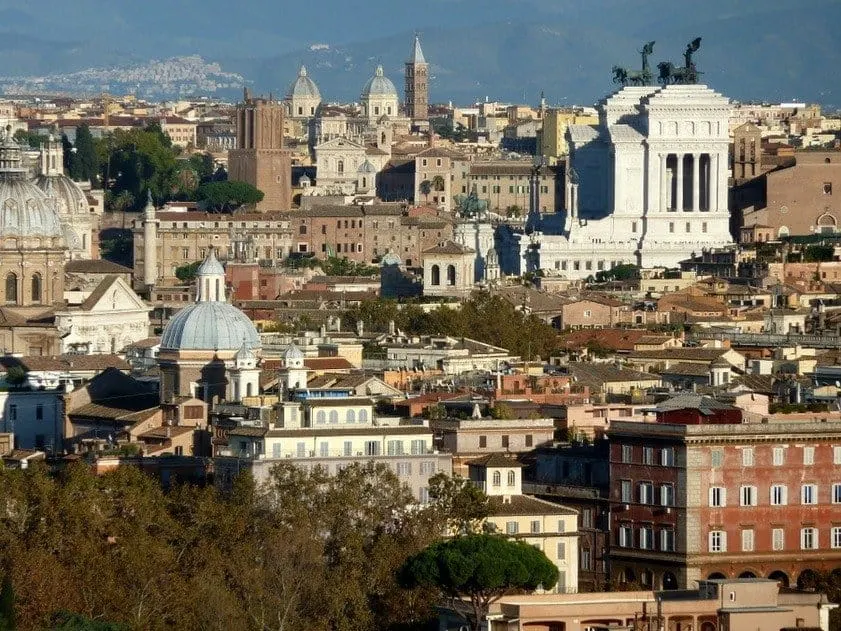
While the formation of Italy started in the early 1860s, the country that we know today was founded as recently as 1946. This means that Rome didn’t belong to Italy at all before and it’s over 2600 years older than the country. In fact, Rome wasn’t part of any country until the 1860s.
The Italy we know today was once divided into multiple kingdoms and empires. Most of these regions were constantly at war, making the unification of the country somewhat tricky. During our visit to Solferino in Lombardy we saw evidence of how the map of Italy changed through the years due to wars and battles.
3. Rome wasn’t always the capital city
Rome wasn’t always the capital city of Italy. In fact, it’s the third capital of the country. After the unification of the Kingdom of Italy, Turin was the first city to become the capital and remained so for almost five years, from 1861 to 1865.
In 1865, Florence became the capital of the kingdom and remained the capital city until 1871 when it eventually changed over to Rome.
4. Rome is densely populated
We all know that Rome is a hugely densely populated city and is home to around three million people. But this is nothing compared to ancient Rome. It’s believed that the population of ancient Rome was between 50-90 million. It’s a rough estimate and I’m sure the exact number will never be known.
Although that’s a very high number and seems unlikely, it actually makes sense because it includes the population of the entire Roman Empire, which covered more than five million square kilometres.
This area is now divided into several countries located on three different continents, including Europe, Asia, and Africa.
5. Rome has several nicknames
Rome has loads of nicknames, one of the most popular of which is Caput Mundi. It’s a combination of two Latin words that literally translate to ‘the capital of the world’. This nickname was given to Rome because of its prosperity, size and population.
The City of Seven Hills is another popular nickname for Rome, because of it was built on and between seven hills.
You may also have heard of Rome being called Urbs Aeterna or the Eternal City. This nickname was first mentioned in the first century BC by potel Tibullus. It’s my personal favourite because I think it’d take an eternity to see everything in the city. Other popular nicknames of the city include Urbs Sacra (Sacred City) and the City of God.
6. Rome is home to the largest European university
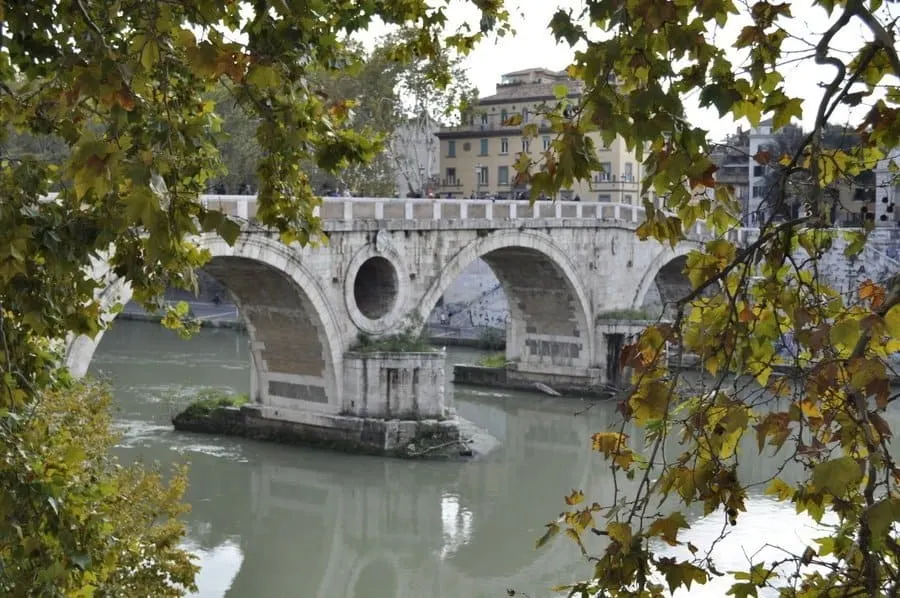
Rome is home to the largest university, La Sapienza University, in Europe, covering more than 110-acres. It’s also the oldest university in Rome, founded in 1303 and supporting over 120,000 students.
Also known as the University of Rome, it’s considered to be one of the most prestigious educational institutions in the world. The university has produced many world-famous politicians, scientists, and Nobel prize winners. For a different kind of university check out my visit to the Gelato University in Bologna.
7. Rome has more churches than any other city
There are more than 900 churches in Rome, which is more than any other city in the world. You only have to head to one of the hills and look across the skyline to see how many churches there are. No other city across the globe is as strongly associated with the Catholic religion as Rome is.
Some of the most important churches to include on a visit to Rome are:
- St. Peter’s Basilica in Vatican City
- San Giovanni in Laterano
- The Pantheon
- The Santa Croce in Gerusalemme
If you’re planning a visit you might want to check out my post with some useful tips for visiting Rome.
8. Rome is a city of fountains
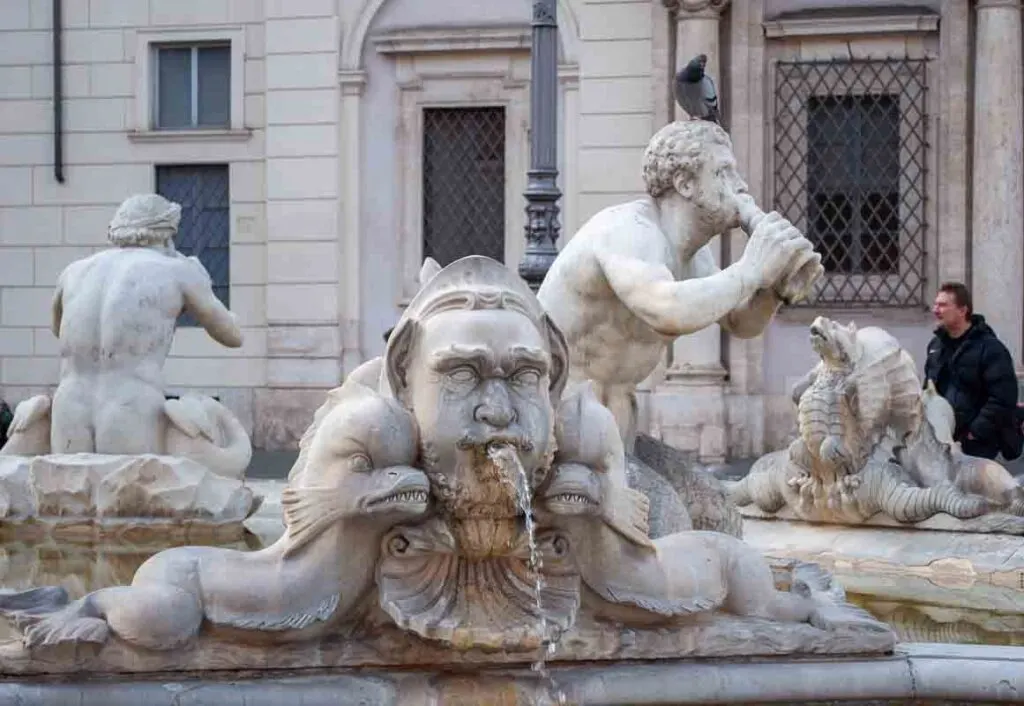
Rome is sometimes called the city of fountains because of the sheer number of fountains it has. It’s one of the first things that you’ll notice, as soon as you start exploring the city. The water is drinkable so take a water bottle when you visit and fill up for free.
There are around 2,000 fountains in Rome some are quite small but others are huge and unmissable.
Two of the most beautiful fountains that you can’t miss while visiting Rome include Quattro Fiumi and the Trevi Fountain. These fountains were not built just for decorative reasons were originally constructed to carry water for people from outside of the city.
The fountains were almost completely destroyed during wars but were renovated to become objects of decoration in the 15th century.
9. Rome invented the word Palace
Did you know that the word ‘palace; was coined in Rome? It originated from the name Palatine hill, which is one of the seven hills of the city.
As the city grew, Palatine hill became the heart of Rome and the centre of power, filled with senators, administrators, politicians, and emperors. Ancient Roman Emperor Augustus (27 BC to 14 AD) started the tradition of building royal residences and palaces on Palatine hill.
This tradition led to a place ancient Romans called Palatine which was derived from the Latin word ‘Palatium’ which means a place of power and strength. From this the English word ‘palace’ was born.
10. Rome is home to the first shopping mall
Have you ever wondered where the idea of shopping malls came from? If you’re looking for an answer, you’ll find it in Caput Mundi. Roman emperor Trajan was responsible for building the world’s very first (at least known) shopping mall, from 107 to 110 AD
Known as Trajan’s Market, the multi-storey shopping area had around 150 rooms selling different goods. As well as food shops, there were libraries and restaurants in the mall. You can still visit the ancient ruins of the market which a near the Colsseum in Rome.
11. The Romans were the first to use concrete
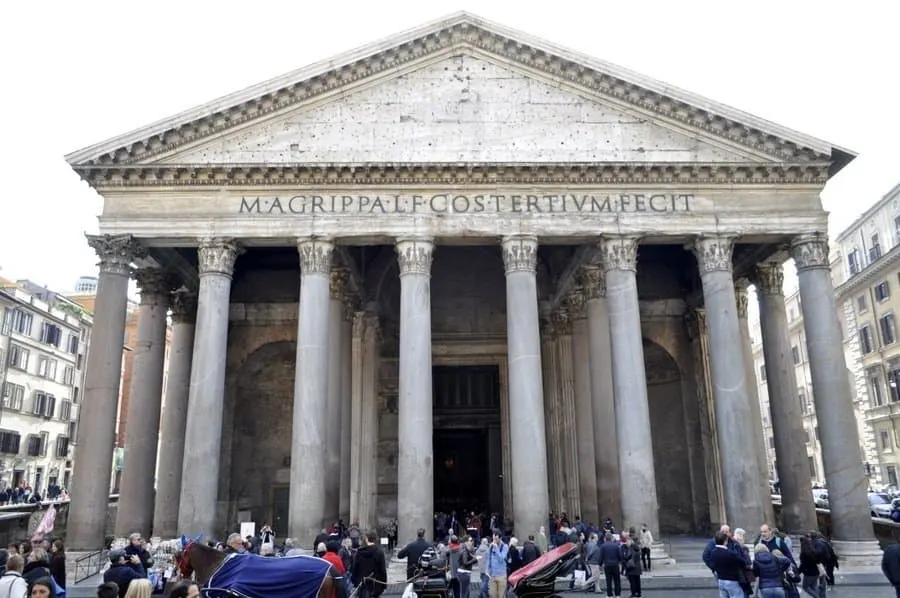
The Roman empire was known for exceptional artists, architects, and philosophers, excelling in different fields, ideas and and inventions. One of the most important highlights of the era is its architecture.
It’s believed that concrete was invented in ancient Rome, which is a notable contribution to humankind. The Pantheon is evidence of the use of concrete by Romans. This building holds the record for having the widest dome (43 metres) in the world made of reinforced concrete.
12. Rome has a thing about cats
Here’s a fact about Rome that cat lovers will enjoy, me included. In Rome, cats are protected by law and they’re legally allowed to spend their lives wherever they want without being disturbed.
According to a law, passed in 1991, no one is allowed to chase away or relocate cats from their natural urban habitat if five or more moggies are living together. Bearing in mind there are over 4,000 cat communes in Rome that’s a lot of cats.
If you want to see cats living their best lives in Rome then head to Largo di Torre Argentina. You’ll find hundreds of cats living in the ruins of this ancient structure.
13. Rome is home to Italy’s First McDonald’s
Rome is the place where Italy’s first McDonald’s was opened in 1986. At the time, people strongly opposed the introduction of fast food in the country and because of this the Slow Food Movement started.
What’s interesting about this McDonald’s shop, at Piazza di Spagna 46, near the Spanish Steps is that it’s entirely different from most of the chain’s shops.
This one has grand interiors with frescoes, statues and mosaics. I guarantee you won’t feel like you’re sitting in a regular McDonald’s if you visit this branch.
14. Coffee in Italy – the ground rules
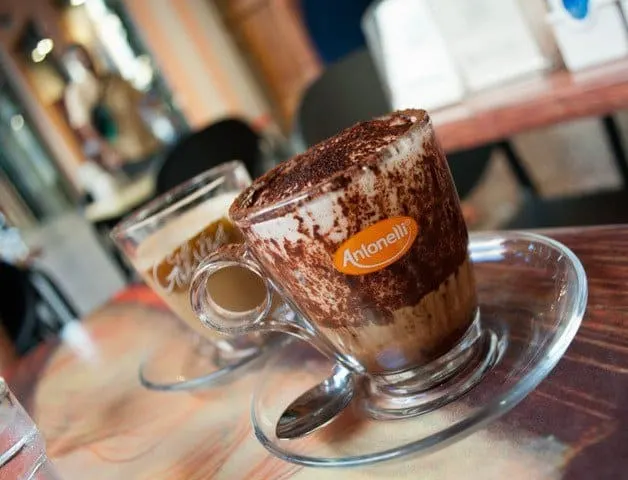
If you’re a coffee lover and are planning to visit Rome, there are some definite coffee rules that you need to know before you order a cup of cappuccino, espresso or any other coffee drink. It’s complicated.
In Rome, and across all of Italy, milk-based coffees, such as caffe latte and cappuccino should never be ordered after 11:00 am. Be prepared for some odd looks from the locals if you order milky coffees after 11:am
Italians only enjoy milky coffees in the morning, never after a meal. They consider these to be too filling to drink after a meal which makes sense to me. I always prefer black coffee after lunch or dinner.
If you need a dose of caffeine in the afternoon or after eating a meal order an espresso, but note they call it just coffee or caffe, not espresso. You could also try a variation like macchiato or doppio.
Oh, and don’t order a latte – you’ll get a glass of milk.
It’s actually a bit more complex than that but I’ve written a whole post about coffee in Italy that explains everything!
15. Discover a hidden gallery – Galleria Sciarra
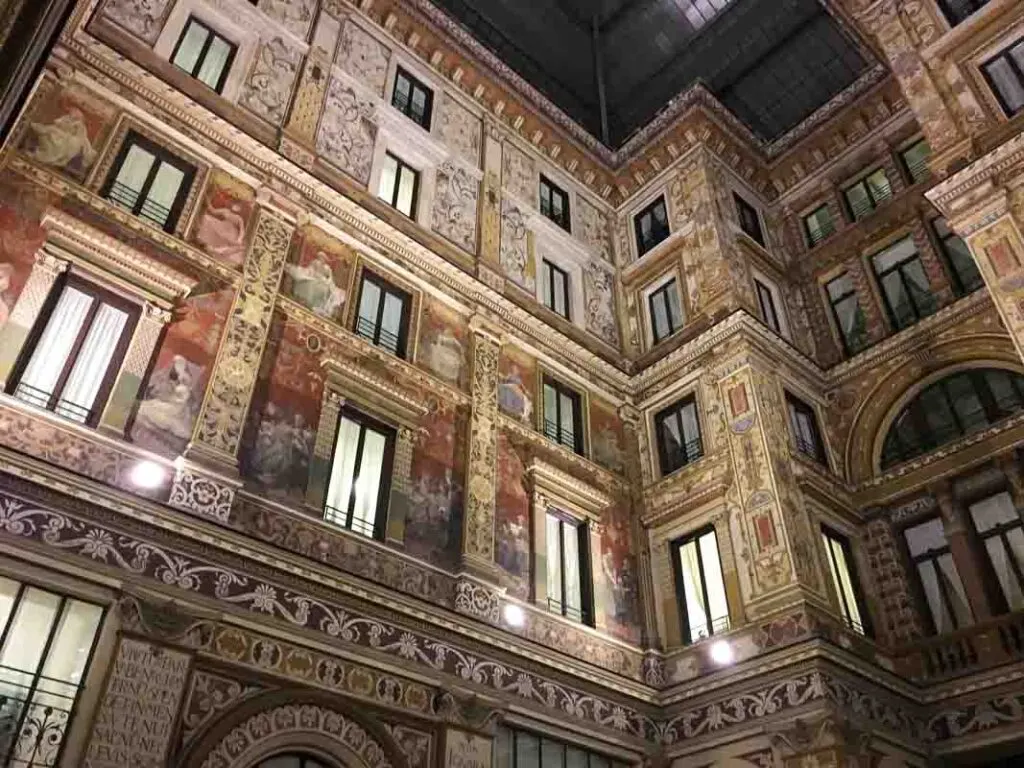
There’s a hidden Rome courtyard at Piazza Santi Apostoli filled with a gallery of beautiful frescoes. If you love architecture then seek out this hidden courtyard and prepare to be awed. The courtyard was built in the 19th century and adorned with Art Nouveau masterpieces painted by Giuseppe Cellini.
We came across the gallery quite by accident and loved the vibrant frescoes which feature wealthy Roman women and the female virtues of kindness, modesty, patience and strength. There’s just one man included in the frescoes; writer Gabriele d’Annunzio.
I highly recommend joining The Roman food tour to find out about all the fabulous food in Rome.
16. The legend of the Trevi Fountain
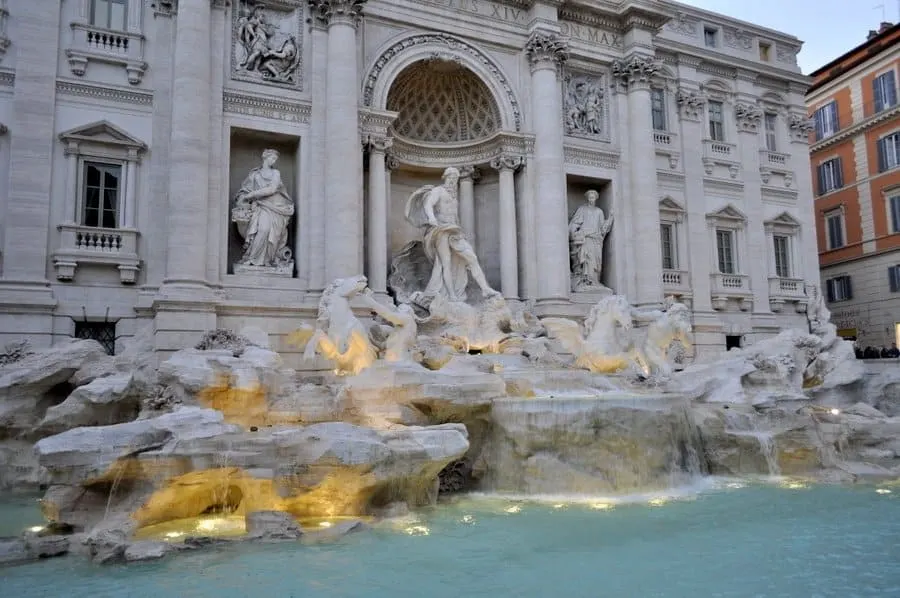
The Trevi Fountain is one of the most popular fountains in Rome. Its unique design, beauty and craftsmanship are more than enough to attract people from across the globe.
You can’t miss this place on your trip to Rome, especially if you dream of finding your soulmate. According to legend, throwing one coin into Trevi Fountain’s water means that you’ll return to the city one day.
If you throw two coins, it means you’ll fall in love with a good-looking local, and throwing three coins will ensure that you get to marry that person. Unsurprisingly, almost all people who visit this site drop coins in the waters of the fountain.
Which means Trevi Fountain has thousands of coins thrown into it every week. These are collected during the year and the money is used by a Catholic charity to help the poor and homeless in the city of Rome.
17. Are the Spanish Steps in Rome really Spanish?
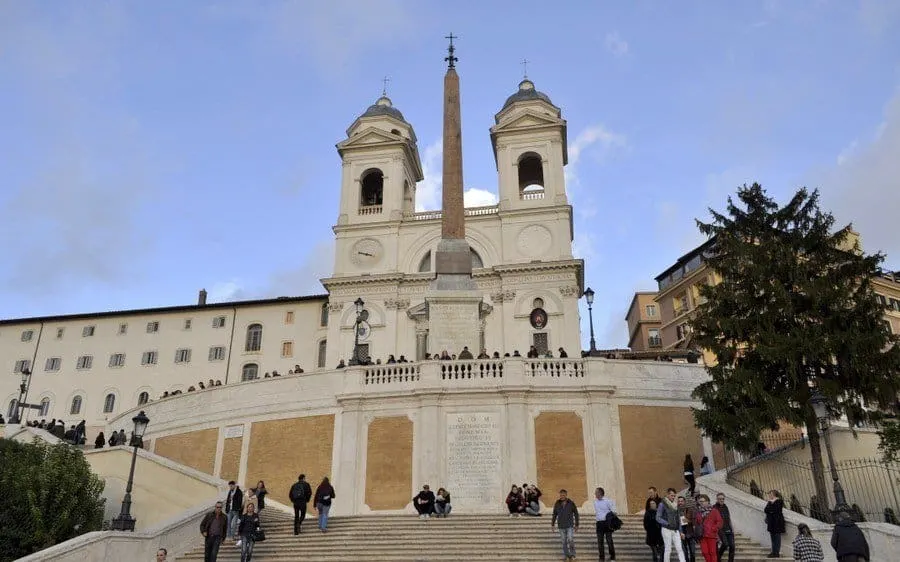
The Spanish steps are one of the most popular and highly visited monuments in Rome. But the name doesn’t quite match the facts. The story of how the Spanish Steps got their name is an interesting fact about the Eternal City.
Italian architect, Francesco de Sanctis, designed the elegant Spanish steps in the 18th century at the request of Étienne Gueffier, a French diplomat.
Etienne Gueffier wanted a dedicated path from the church of Trinita Dei Monti to the square of Piazza di Spagna. So technically, the name of the 138 steps should contain “Roman” or “French”, but obvioiusly they don’t.
The name Spanish steps stuck because there is a piazza of the Spanish embassy where the steps end. At the bottom you’ll find Fontana della Barcaccia (Fountain of the Boat) a pretty Baroque-style fountain.
18. There’s a state within the city of Rome
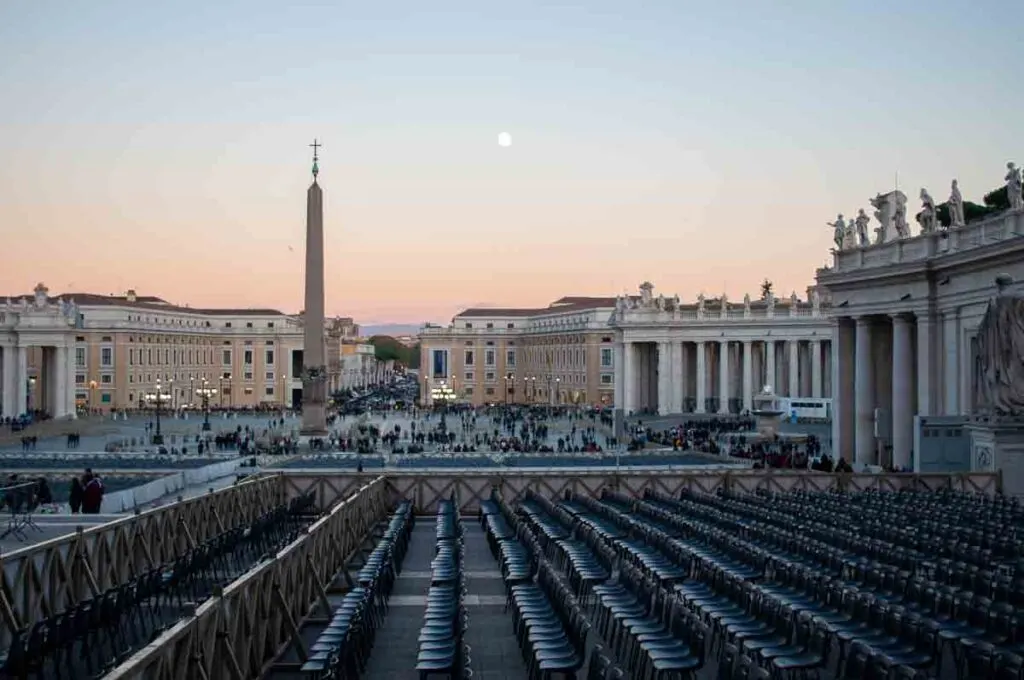
Rome is the only city in the world that is home to a country, known as the Vatican City. It’s one of my favourite facts about Rome because it means you can visit two countries in half an hour!
Yes, Vatican City is a separate and independent country. It’s the home of the Pope and Catholics consider it the religious centre of the world.
It’s the smallest independent country across the globe where passports and postage stamps are issued. St Peter’s Basilica is located in Vatican City, and is visited by millions of tourists each year.
If you’re lucky enough to visit this tiny country in Rome, be sure to visit the Vatican Museum. It has more than 54 different galleries while the total collection of sculptures and paintings consists of 70,000 objects of which about 20,000 are on display. No visit to the Vatrican is complete without stepping into the sublime Sistine Chapel.
19. There’s a secret passage to the Vatican City
Did you know this fact about the City of Seven Hills? Castel Sant’Angelo is one of the most popular and beautiful sites near Vatican City. The castle is renowned for its prison, gardens, hallways, torture chamber(!) and unique frescoed rooms.
There’s a secret elevated passage in the Castel Sant’Angelo, known as Passetto di Borgo, which leads to the Vatican City. This passage was specially built for the safety of the Pope to enable him to reach the Castel Sant’Angelo easily if there is any danger in the city.
Pope Clement VII used this secret passage during the siege of Rome in 1527 to escape to the nearby castle from the Vatican.
20. Most of the Ancient City is underground
Much like Pompeii, most of ancient Rome hasn’t been excavated and lies underground. It’s estimated that most of the ancient city is still about 30 feet below the current street level. Despite the difficulties of excavating each layer of ancient Rome within a modern city, a few projects have exposed some interesting sites. Some can be visited and others can be seen through glass floors and walls.
21. The Pantheon is also a sundial
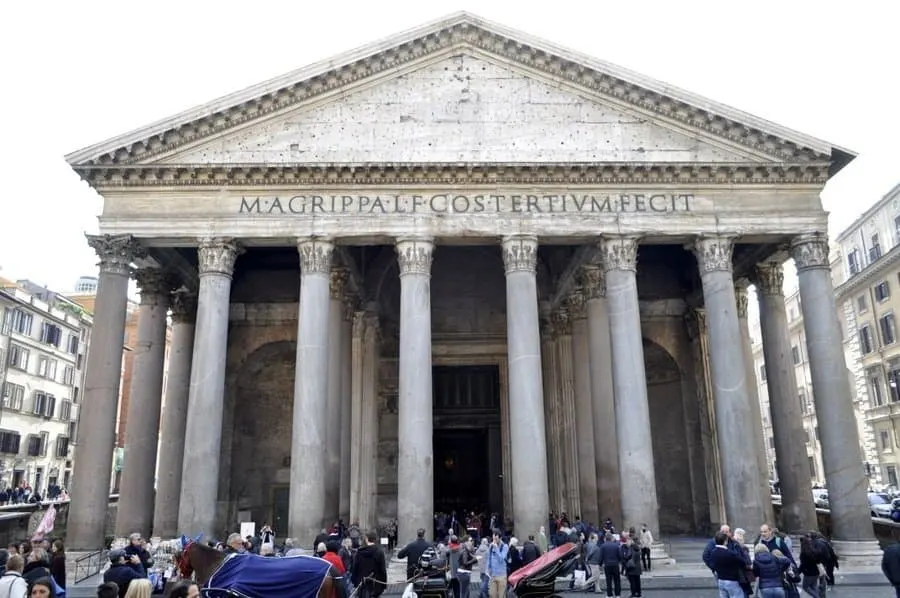
The Pantheon is the most beautiful and best-preserved structure in the entire city of Rome. It’s a must-see during your trip and is one of my favourite buildings in the city. It used to be a pagan temple before it was converted into a church.
You can’t help but notice its huge dome, impressive columns and beautiful fountain outside but there are other features to check out inside.
The roof of the Pantheon acts like a giant sundial letting light into the building through the window in the middle of the dome. But you’ll need to visit on the 21st of April to see it at its best.
At noon the sun streams through the dome and shines light directly onto the entrance of the Pantheon. The date is important because the 21st of April is the founding date of the city of Rome.
22. St Peter’s Basilica needs at least a day to explore
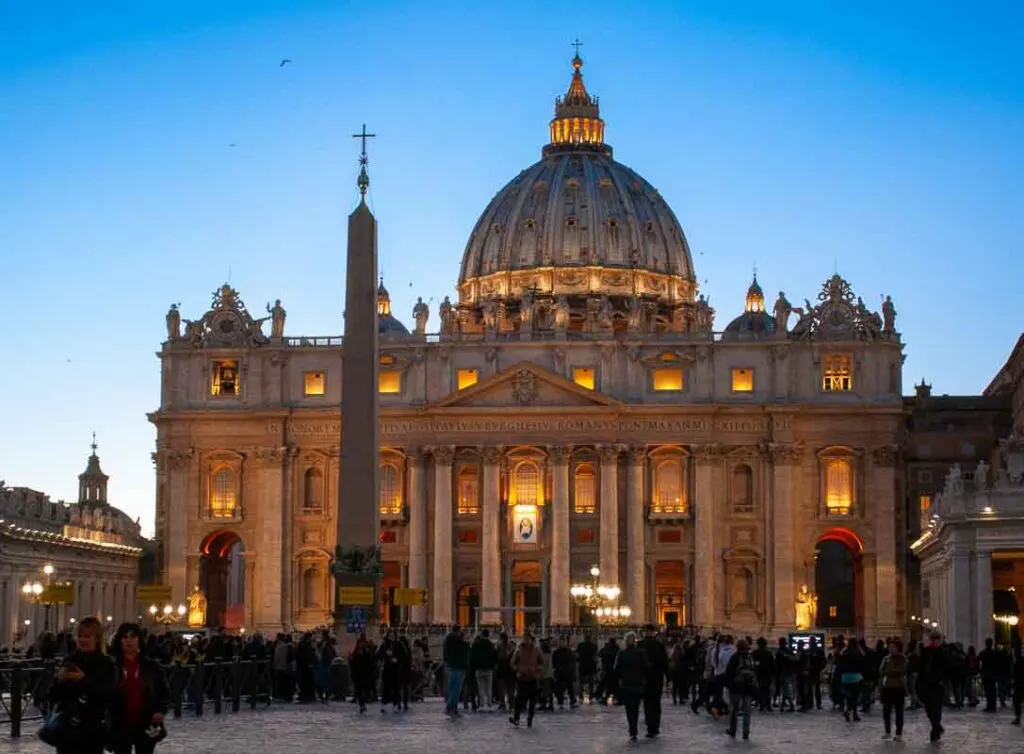
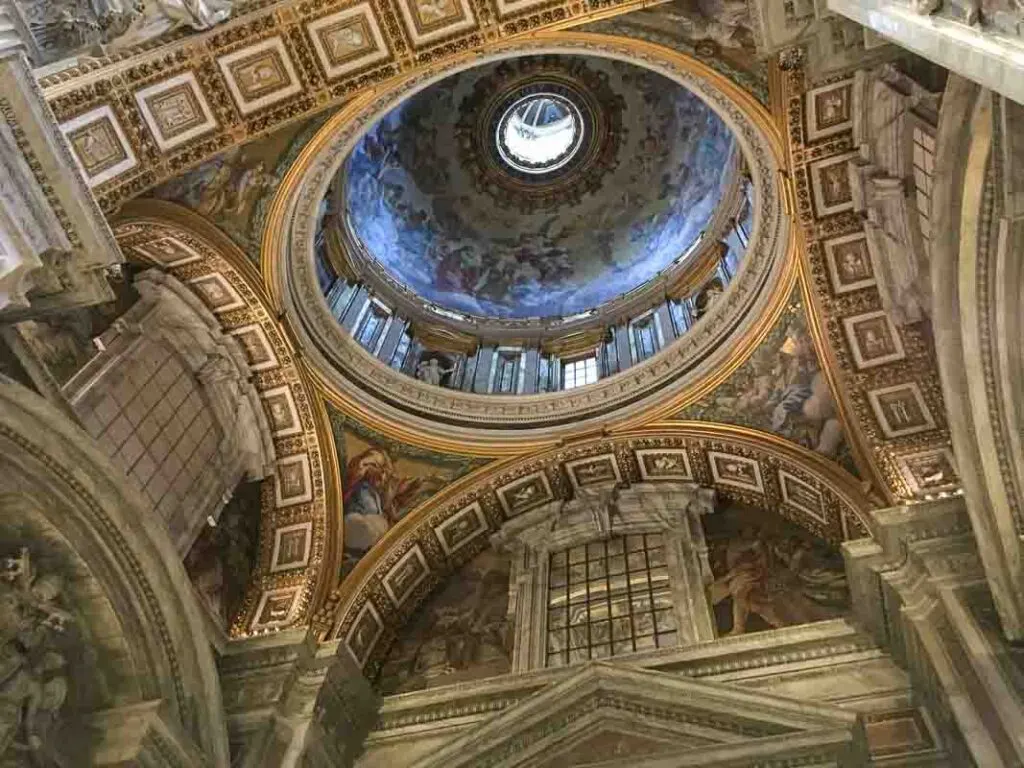
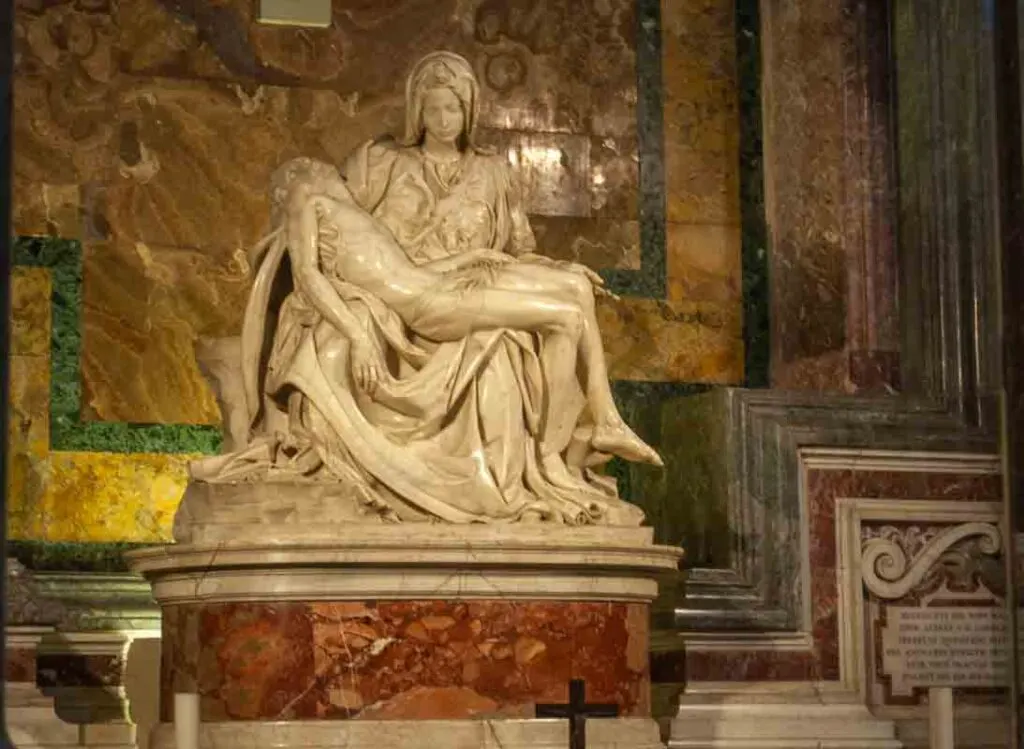
Saint Peter’s Basilica is a magnificent building, located in the State of the Vatican City and occupying the original burial site of St Peter the Apostle. His remains are said to lie directly beneath the alter but this has never been proven or disproven. Pope Julius II laid the foundation of this building in 1505 and it took around 150-years to complete the construction.
The church was finally completed in 1667 and is a must-see place on your visit to Rome. The Basilica is absolutely incredible but buy your tickets in advance as queue waits can be two or more hours.
23. Rome had an advanced water supply system
Water was incredibly important to the Romans and they began prioritising their water supply almost 2,000 years ago. An advanced system carried water into the city through canals and aqueducts to the fountains located all over the city so the people had access to clean water.
Many of these water carrying structures are still standing today, and the modern city has more working fountains than any other place across the globe. In order to ensure a steady and consistent supply of water, people had canal pipes constructed inside their dwellings.
There were public baths and sanitary areas around the city that were open to the public. Many had amenities like dining areas, massages, relaxing and socialising.
You can still visit places like this in Rome. Terme Dei Papi, Acqua Madre hammam, and QC Terme are all places where you can go and enjoy the original bathing experience of ancient Rome.
24. The Colosseum and its gory history
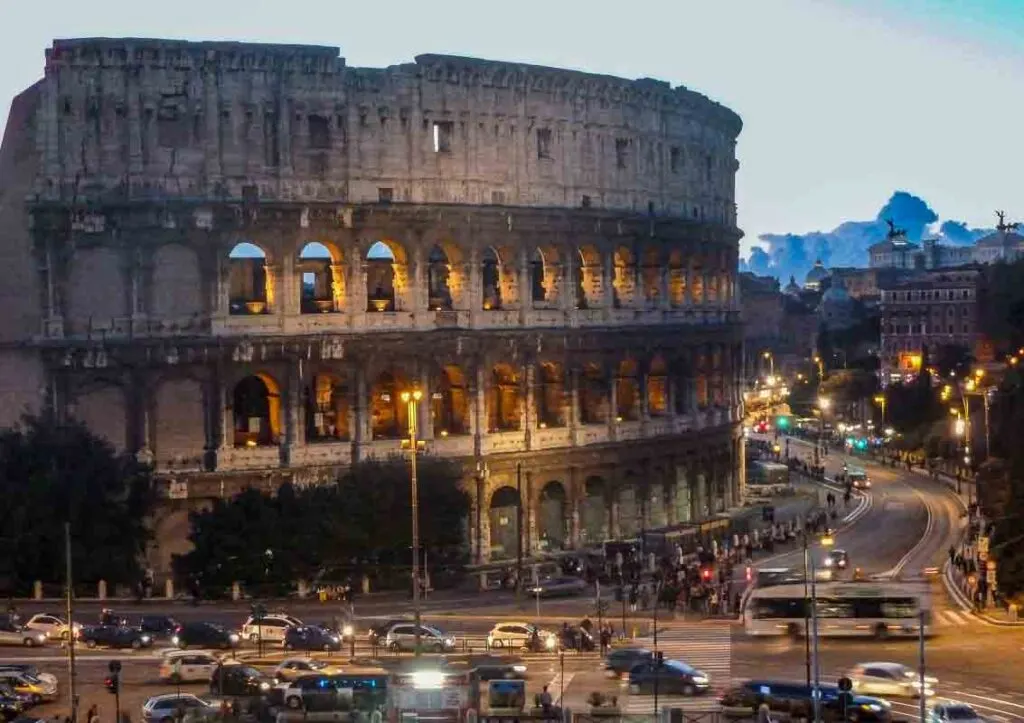
The Colosseum is one of the most famous structures in the world and of course it’s located in Rome. It’s one of the first structures that first springs to my mind when anyone mentions Rome.
It’s common knowledge that it’s where the gladiator fights used to take place. But did you know that more than a million animals and 500,000 people died in The Colosseum?
Emperor Vespasian (9 AD to 79 AD), built the Colosseum with the use of thousands of slaves. It had a retractable velarium for shade, a warren of underground passages, 36 trap doors, and 80 different entrances.
During its heyday it hosted naval battles, chariot races and wild animals. Over 50,000 spectators would attend to witness the spectacles. The reigning emperors used to offer spectators free food which also attracted the crowds.
Nowadays, over half of the building is no longer there but it’s still one of the most visited places on earth. Each year more than 6-million people visit this largest amphitheatre in the world. If you visit make sure to book a tour of the arena and underground chambers as well as the Colosseum itself.
25. Invention of law happened in Rome
One of the lesser-known facts about Rome that I was surprised to learn is that it’s the birthplace of the first known legal system in the world.
There was a period of social unrest in Rome from 134 BC to 44 BC when legal decisions were made arbitrarily. The people pushed for laws to be written down so that disputes could be settled reasonably and fairly.
As a result, a cosmmittee, called the decemvirs, was created. It was made up of 10 people who wrote down the legal system, known as ‘Twelve Tables’, for the very first time. This became the foundation of Roman law and it covered everything from religious, public and civil law.
26. The Romans designed excellent road networks
The Ancient Romans were excellent road builders and created a complex network of roads in the fourth century. This network of around 80,000 kilometres (50,000 miles) consisted of highways, which not only allowed Romans to travel across Europe but also helped them during warfare.
Whenever the Romans defeated a town and added it to their empire, they created a new road linking the newly captured area to Rome in order to ensure easy access.
Not only did Romans create a complex road network, but they kept it well-maintained. The Appian Way is one such ancient road that still exists today which runs from Rome to Brindisi in the South.
27. Ancient Rome had newspapers
Although the invention of the printed newspaper and printing press took place in the 15th century, ancient Romans had their own type of newspaper. These were called Acta Diurna, which translates as ‘Daily Acts’.
During that time, people used plant materials to write snippets of daily news like deaths, weddings, birth announcements, legal matters and important events , just like modern-day newspapers.
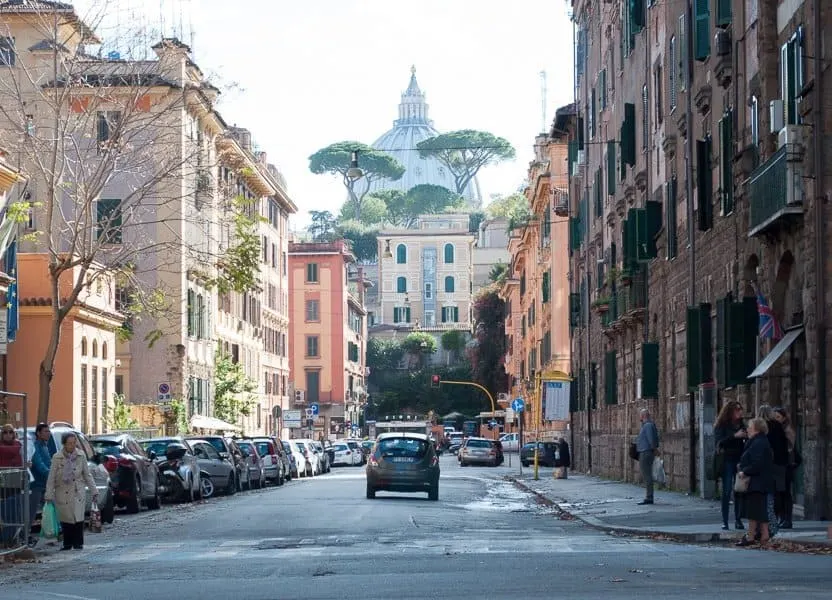
28. Kissing could be dangerous
Kissing on the lips used to be a common way of greeting people during ancient times. It was considered a display of salutation, gratitude, and a sign of affection among ancient Romans.
However, a kiss could also used as a form of breathalyser or lie detector. Men would also use this tactic to detect if their wives had drunk wine, as women were not allowed to drink at that time. I’m so glad I didn’t live in Rome back then.
Bocca Della Verita, which translates to ‘Mouth of Truth’ is a lie detector that people during ancient times used to detect porky pies. This unique, and slightly scary looking, marble sculpture sits in Cosmedin church.
People would place their hands into the mouth of Bocca Della Verita and make a statement. If what they said was a lie, Bocca Della Verita would bite off their hand. I’ve visited Cosmedin church to test it out and here I am typing away at my keyboard both hands intact. No word of a lie…
29. The Romans dyed their hair
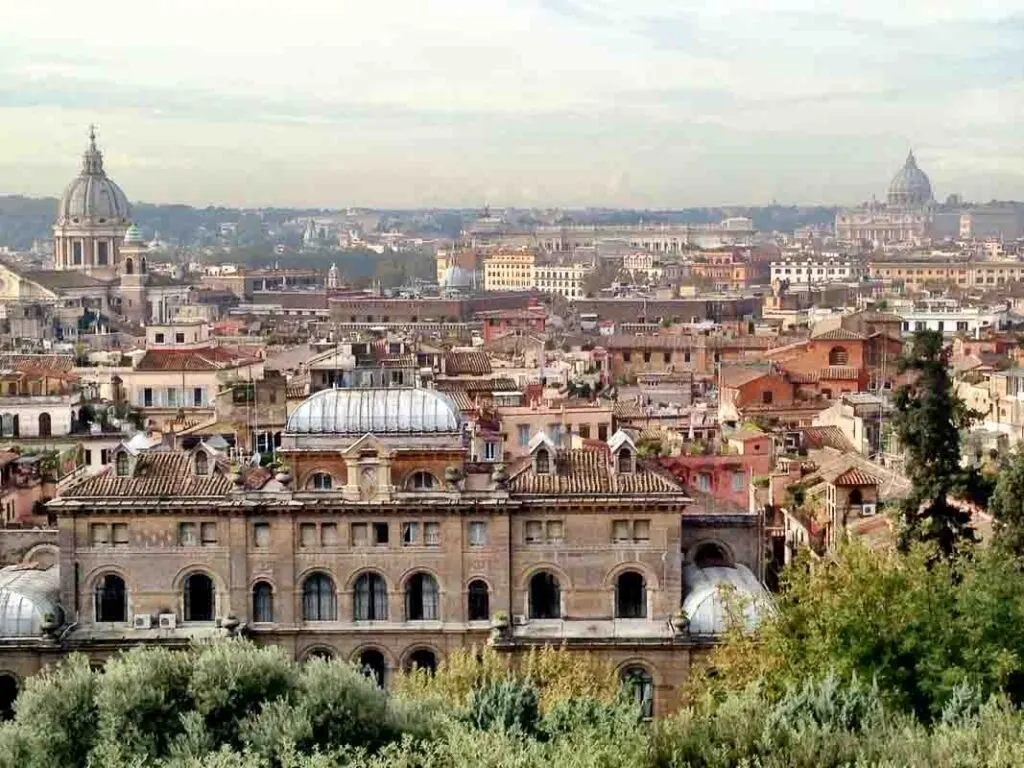
If you have watched films like Gladiator and Agora, showing ancient Roman culture, you will already know that ancient Roman women were very fashionable.
Not only were they conscious of their clothes, jewellery and makeup, but they also used to dye their hair black, blonde and auburn. Ingredients like beech wood ash, goat fat, vinegar and even leeches were used.
Prostitutes of that time were ordered by local law to have blonde hair so that people could easily recognise them. Obviously, you wouldn’t want to be a natural blonde in ancient Rome…
30. The Romas had a weird way of brushing their teeth
If you’re squeamish it’s best you swiftly scroll down to fact 31.
Ancient folk remedies and medicines had one strange ingredient in common. Wee, or to be technically correctcorrect urine. There is an active substance in pee, called ammonia, and apparently it’s effective in lifting different types of stains.
The less water and more ammonia in urine means the aroma is stronger. For ancient minds, I guess it could be logical to use this to remove stains from clothes but would you ever consider using wee to clean your teeth? Me neither.
Weirdly, the ancient Romans did. Not only did they use human pee to brush their teeth but they also had public urinals to collect it from the public. The people who traded in urine used to earn a decent amount of money and had to pay tax on their earnings.
As toilet paper wasn’t invented back then, people used running water and a tersorium (a wet sponge attached to a stick) to clean up. Moving swiftly on…
31. Gladiators were celebrities
One of the most interesting topics of ancient Roman history is its gladiators. Although many people believe that all gladiators used to fight to the death in the arena, not all of them met their demise in the Colosseum.
Gladiators would fight to demonstrate their power and strength and were seen as celebrities despite the fact they were actually slaves.
Another interesting fact about gladiators is that doctors prescribed their blood to people suffering from epilepsy. It was believed that the energy of gladiators at the time of their death could cure epileptics.
32. Saturnalia Festival
This is a good one and one of my personal favourite facts about Rome. During ancient times, there used to be an annual Saturnalia festival, held on 17th December in honour of Saturn, the god of sowing or seed.
Homes were decorated with wreaths and festive activities such as exchanging gifts, socialising, and feasting took place.
During this festival rolls were reversed; the slaves would become masters and the masters would become slaves. At first, people used to trade their places just for one day, but later on, it became a week.
The slaves were allowed to talk to their masters however they wanted, and even be rude to them, without being punished. There was a rule that no grudges would be held after the festival, which is just as well I’d say. Unsurprisingly, this tradition died out fairly quickly.
33. There’s no cream in Rigatoni Carbonara

Did you know that lush creamy Carbonara doesn’t have an ounce of cream in it? True Roman Carbonara is a must try food in Rome but there’s no cream in it whatsoever.
This typical Roman dish was invented as recently as the 1950s and is made with raw eggs, Pecorino Romano and Parmigiano Reggiano cheese. The meat is guanciale, a type of Italian cured pork cheek. Pancetta can also be used – either way it’s delicious and a must-try dish during your visit to Rome.
And finally…
Rome is one of the most amazing cities in the world and is packed with interesting and fun facts. There are more places in this city to visit than you can fit into a short trip and I wonder if maybe that’s why it’s known as the Eternal City – you’ll never actually see it all in one lifetime.
I hope you’ve discovered some new facts about Rome which will help you understand how the city has been shaped into the amazing modern Rome we know today. If you’re planning a trip to Italy, don’t forget to check out all of my Italy travel blogs.
Do you have any interesting or fun facts about Rome that I’ve missed? Shout them out in comments below.

Suzanne Jones is a full-time travel blogger and writer at The Travelbunny which she started in 2011 during her time as a professional travel planner. Suzanne enjoys exploring new destinations, culinary encounters and the outdoors. When not travelling or writing about her adventures you’ll most likely find her, camera in hand, enjoying coastal walks in Sussex.
Suzanne also runs Hello Sussex a website which showcases the best of East & West Sussex. Read more about Suzanne.
